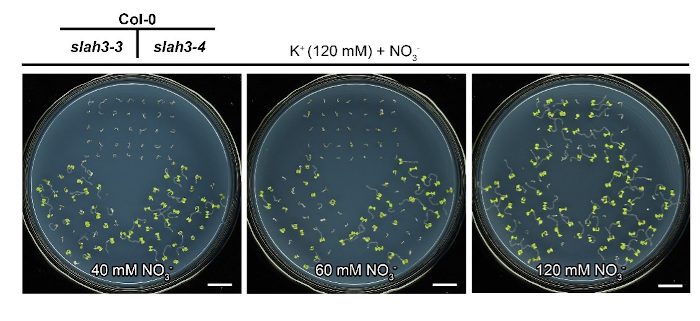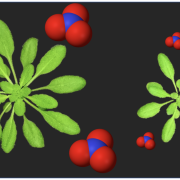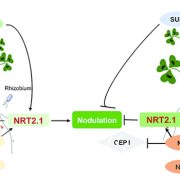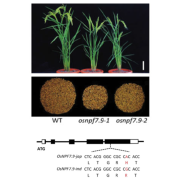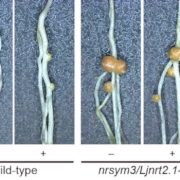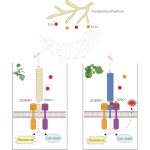Ion channels regulate nitrogen–potassium balance
By Beibei Liu and Kai He
Ministry of Education Key Laboratory of Cell Activities and Stress Adaptations, School of Life Sciences, Lanzhou University, Lanzhou 730000, China
Background: The nitrogen (N)–potassium (K) balance not only profoundly affects plant growth but also serves as an essential signal to regulate plant–environment interactions. However, the detailed molecular mechanisms that maintain the N–K balance are largely unknown.
Question: How does the nitrate efflux channel SLAH3 regulate the N–K balance in plants?
Findings: The anion channel SLAH3 mediates NO3− efflux under high K+ conditions. The accelerated depolarization next causes the opening of the K+ channels GORK and SKOR to mediate K+ efflux. The channel–channel interaction may also be important for manipulating K+ channel activities. We found that the N–K balance is regulated by N and K channels, with both the membrane potential and the interactions between these membrane proteins modulating this regulation.
Next steps: As anion and cation channels function coordinately to regulate the N–K balance, the corresponding genes could be used to construct novel crop variants that can withstand diverse N–K environments through molecular breeding.
Beibei Liu, Changxin Feng, Xianming Fang, Zhen Ma, Chengbin Xiao, Shuaishuai Zhang, Zhenzhen Liu, Doudou Sun, Hongyong Shi, Xiaoqin Ding, Chenyang, Qiu, Jia Li, Sheng Luan, Legong Li, and Kai He. (2023). The anion channel SLAH3 interacts with potassium channels to regulate nitrogen–potassium homeostasis and the membrane potential in Arabidopsis. https://doi.org/10.1093/plcell/koad014


